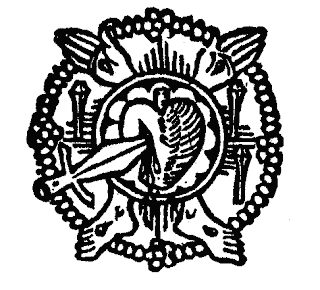
Items collecting still around the essay, "No Wound Speaks For Itself" by Thyrza Nichols Goodeve in Artforum International, January 1992:
But what is pain? Pain rends. It is the rift. But it does not tear apart into dispersive fragments. Pain indeed tears asunder, it separates, yet so that at the same time it draws everything to itself. Its rending, as a separation that gathers, is at the same time that drawing which, like the predrawing of a plan or sketch, draws and joins together what is held apart in separation. Pain is the joining agent in the rending that divides and gathers. Pain is the joining of the rift. - Martin Heidegger, Unterwegs zur Sprache, 1959
From New American Radio:
"That is not a pretty cut..."
Display Wounds (1986) by Gregory Whitehead. A fictionalised monologue that addresses the "woundscape" of the human species in the wake of the history of technology through the brooding ruminations of a "vulnerologist"—a wound doctor whose slow and seductive voice unfolds the history of wounds, and the damage that extends even into the future, (mis)shaping the unborn. Punctuated by periodic suggestions from tango music ("Life is but a dry wound. Oh hot-blooded sadness, bleed away from me.") Commissioned by NEW AMERICAN RADIOListen here: http://www.turbulence.org:8080/ramgen/somewhere/display.rm
For wounds will always play the fool. Wounds are compulsive liars. The way the wound appears on the surface is rarely an accurate identification of the full dimensions of the wound.... Wounds cannot speak for themselves. And yet wounds are the evidence of stories that are of profound importance. If they are neglected, ignored or simply stiched up and forgotten, then we will get to the point where we can't look at ourselves. The wounds become deeper, less apparent, more structural, if you will, even genetic. Wounds that become apparent only in the second or third generation.
The theater of wounds is a memory theater. Our failure to look at wounds now, and interpret them now, may lead us to give birth to a society of monsters. - Whitehead, Display Wounds
From Lubeck's Dance of Death:
The dances of death sometimes show a fascination with God's wounds - like this example from the end of the first chapter in Des dodes dantz:
De vefte is de ewige dôt to ewiger tît;
Dârvor beware uns Jesus unser here
Dorch sinen dôt unde siner hilgen vîf wunden ere.
The fifth is the eternal death for eternal times;
[may] Jesus - our Lord - save us from this
through his death and his holy five wounds.


No comments:
Post a Comment